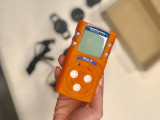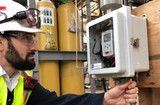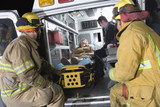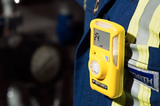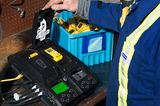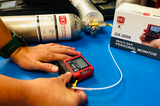Blog
What Makes AimSafety Portable Gas Monitors A Great Option For Gas Detection?
At PK Safety, we get a lot of questions about
AimSafety, a lesser-known gas detection equipment manufacturer. Despite making some of the finest portable monitors on the market today, AimSafety detection gear struggles with name recognition when compared to some of the leading competitors. Learn more about AimSafety gas monitors and how they compare to some better-known options on the market.
Why We Trust AimSafety
Just because AimSafety hasn’t been around as long as brands like
…
Apr 23rd 2020
Frequently Asked Questions about LEL Gas and LEL Gas Detectors
Understanding the lower explosive limits (LEL) of combustible gases is crucial when it comes to protecting the health and safety of your employees. As a construction worker, maintenance professional or someone that works in confined spaces, you need to be aware of the LELs of certain hazardous gases, while measuring the amount of gas in the air as a percentage of the total volume using a gas monitor. If the amount of gas in the air suprasses the LEL, the gas could spontaneously combust, injur
…
Apr 6th 2020
Portable CO Detector EMS: The Best EMS Carbon Monoxide Detectors for EMTs and First Responders
Carbon monoxide poisoning remains all too common throughout the U.S. Fire smoke, portable generators, gas stoves, water heaters, pumps, blowers, and other gas-powered equipment can easily lead to dangerous and deadly carbon monoxide poisoning.
As an EMT, first responder, or ambulance driver, it’s important to be aware of the risks and warning signs associated with carbon monoxide. You may encounter carbon monoxide on the job, so it’s best to have a single gas CO monitor on hand. Learn more
…
Jan 29th 2020
Why Do Winter Months Hold Highest Risk for Carbon Monoxide Poisoning?
As a colorless, odorless gas, carbon monoxide is known as the “silent killer.” Exposure to high levels of carbon monoxide can lead to a range of health effects and illnesses, including headaches, dizziness, vomiting, unconsciousness, and even death. This is what’s known as carbon monoxide poisoning.Risk of carbon monoxide poisoning tends to be highest during the winter months. All over the country, millions of homes and businesses are turning up their furnaces and heaters to stay warm. Furnaces,
…
Dec 13th 2019
When and How to Install an RKI Beacon Fixed Gas Detection Systems
When it comes to monitoring and detecting hazardous gases like carbon monoxide, chlorine, nitrogen dioxide, and phosgene (for example), there are two kinds of monitors: portable gas monitors and fixed system gas monitors. The user will wear a portable gas monitor on their lapel, or near what’s known as the breathing zone when working in potentially hazardous environments. Another choice would be a 'Fixed Point' gas detector. As the name implies, the sensor is typically mounted in place, and d
…
Dec 9th 2019
How to Re-Calibrate a Gas Detector - Gas Detector Calibration
There are lots of different options to consider when
re-calibrating a gas monitor. Every gas detector is different, so re-calibrating all depends on what kind of monitor you’re working with.
Re-calibration is essential when it comes to the health and safety of your employees.
Gas monitors typically need to be re-calibrated every six months, according to The Occupational Safety and Health Administration (OSHA). You’ll also need to bump test your equipment regularly t
…
Nov 19th 2019
Calibration Gas Shelf Life: Do Calibration Gases Have a Shelf Life?
When using a gas monitor, it’s important to make sure your monitor is properly calibrated, otherwise your readings may be inaccurate. To properly calibrate your monitor, you’ll need to use a concentration of the gas you’re trying to detect. The test gas typically comes in disposable or nonrefillable cylinders that either made of steel or aluminum. This is also known as a calibration gas or span gas, but these gases have a shelf life. You’ll need to replace your calibration gases according to
…
Oct 14th 2019
Gas Detector Tubes: How Do I Read My Gas Detection Tubes?
Gas detection tubes have exploded in popularity over the last few decades. These single-use tubes are designed to record the presence of chemical compounds in the air. Some are toxic, like different types of acid, while others are harmless, such as water vapor.
Just insert the tubes into a hand pump, suck in air through the pump, and read the results to find out if the air is safe to breathe. Gas detection tubes are commonly used to take grab samples in a wide variety of applicati
…
Sep 10th 2019
Why Your Business Should Select RKI Gas Monitors and Products
Gas detection is crucial when it comes to the health and safety of your employees. If you fail to monitor your work environment, you could unintentionally expose your employees to hazardous gases, which could lead to a range of health conditions, illness, and even death. Both fixed and mobile gas monitors allow you and your team to protect yourselves from various gas-related hazards in confined spaces, including flammable gases that could combust under the right circumstances. Gas monitors ar
…
Aug 26th 2019
Made in the USA Favorites
As we get closer to Independence Day, or the Fourth of July,
we’re taking a moment to celebrate this great nation of ours and why it’s
important to buy safety products made in the USA. In addition to supporting
local and domestic businesses, safety products made in America tend to be more
durable and reliable than those made abroad. Learn more about why you should
always buy safety products made in America.
Why Buy American-Made
Safety Products?
You can’t afford to cut co
…
Jun 26th 2019


